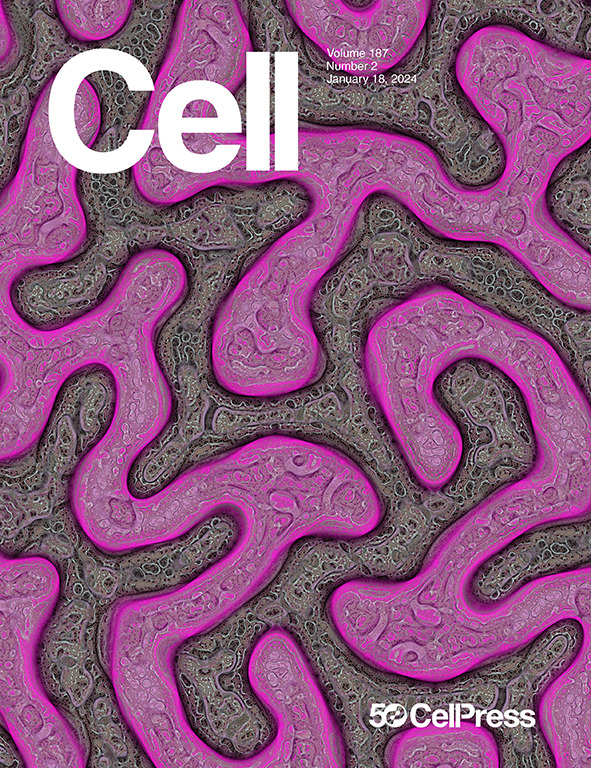Proximity between LAG-3 and the T cell receptor guides suppression of T cell activation and autoimmunity
IF 45.5
1区 生物学
Q1 BIOCHEMISTRY & MOLECULAR BIOLOGY
引用次数: 0
Abstract
Therapeutically targeting pathogenic T cells in autoimmune diseases has been challenging. Although LAG-3, an inhibitory checkpoint receptor specifically expressed on activated T cells, is known to bind to major histocompatibility complex class II (MHC class II), we demonstrate that MHC class II interaction alone is insufficient for optimal LAG-3 function. Instead, LAG-3’s spatial proximity to T cell receptor (TCR) but not CD4 co-receptor, facilitated by cognate peptide-MHC class II, is crucial in mediating CD4+ T cell suppression. Mechanistically, LAG-3 forms condensate with TCR signaling component CD3ε through its intracellular FSAL motif, disrupting CD3ε/lymphocyte-specific protein kinase (Lck) association. To exploit LAG-3’s proximity to TCR and maximize LAG-3-dependent T cell suppression, we develop an Fc-attenuated LAG-3/TCR inhibitory bispecific antibody to bypass the requirement of cognate peptide-MHC class II. This approach allows for potent suppression of both CD4+ and CD8+ T cells and effectively alleviates autoimmune symptoms in mouse models. Our findings reveal an intricate and conditional checkpoint modulatory mechanism and highlight targeting of LAG-3/TCR cis-proximity for T cell-driven autoimmune diseases lacking effective and well-tolerated immunotherapies.

LAG-3和T细胞受体之间的接近指导T细胞活化和自身免疫的抑制
在自身免疫性疾病中靶向致病性T细胞的治疗一直具有挑战性。虽然已知活化T细胞上特异性表达的抑制检查点受体LAG-3与主要组织相容性复合体II类(MHC II类)结合,但我们证明仅MHC II类相互作用不足以实现最佳LAG-3功能。相反,LAG-3在同源肽- mhc II类的促进下,与T细胞受体(TCR)而不是CD4共受体的空间接近,在介导CD4+ T细胞抑制中是至关重要的。从机制上讲,LAG-3通过其细胞内FSAL基序与TCR信号成分CD3ε形成凝聚,破坏CD3ε/淋巴细胞特异性蛋白激酶(Lck)的结合。为了利用LAG-3与TCR的接近性并最大限度地抑制LAG-3依赖性T细胞,我们开发了一种fc减毒的LAG-3/TCR抑制双特异性抗体,以绕过同源肽- mhc II类的要求。这种方法可以有效抑制CD4+和CD8+ T细胞,并有效缓解小鼠模型中的自身免疫症状。我们的研究结果揭示了一个复杂的、有条件的检查点调节机制,并强调了LAG-3/TCR顺式邻近靶向治疗缺乏有效和耐受性良好的免疫疗法的T细胞驱动的自身免疫性疾病。
本文章由计算机程序翻译,如有差异,请以英文原文为准。
求助全文
约1分钟内获得全文
求助全文
来源期刊

Cell
生物-生化与分子生物学
CiteScore
110.00
自引率
0.80%
发文量
396
审稿时长
2 months
期刊介绍:
Cells is an international, peer-reviewed, open access journal that focuses on cell biology, molecular biology, and biophysics. It is affiliated with several societies, including the Spanish Society for Biochemistry and Molecular Biology (SEBBM), Nordic Autophagy Society (NAS), Spanish Society of Hematology and Hemotherapy (SEHH), and Society for Regenerative Medicine (Russian Federation) (RPO).
The journal publishes research findings of significant importance in various areas of experimental biology, such as cell biology, molecular biology, neuroscience, immunology, virology, microbiology, cancer, human genetics, systems biology, signaling, and disease mechanisms and therapeutics. The primary criterion for considering papers is whether the results contribute to significant conceptual advances or raise thought-provoking questions and hypotheses related to interesting and important biological inquiries.
In addition to primary research articles presented in four formats, Cells also features review and opinion articles in its "leading edge" section, discussing recent research advancements and topics of interest to its wide readership.
 求助内容:
求助内容: 应助结果提醒方式:
应助结果提醒方式:


